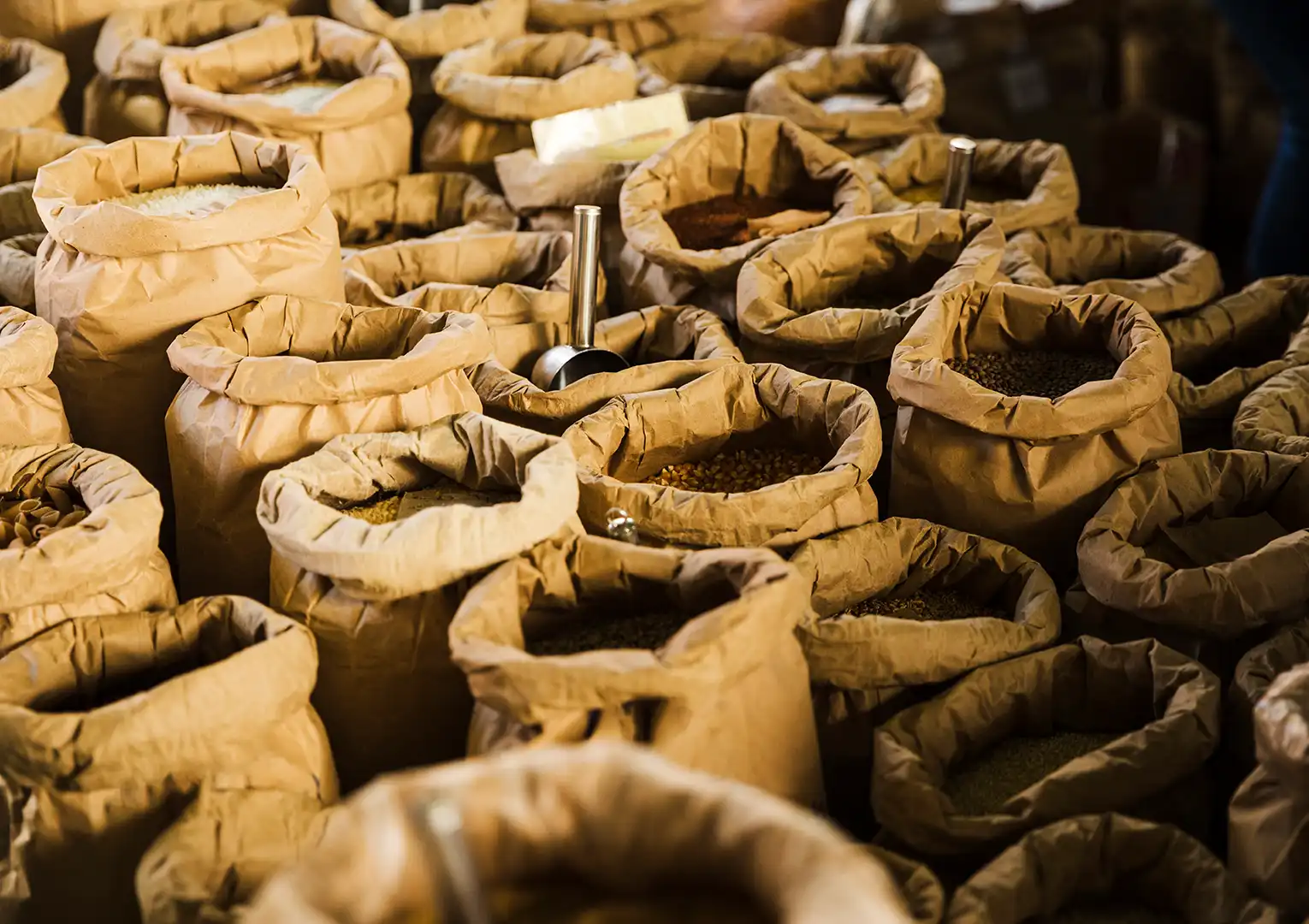Industrial Raw Materials: Their Role, Types, and How to Manage Them
April 21, 2025
Share This Article

Industrial raw materials can be processed into a wide variety of products across different industries. From a manufacturing perspective, they are the inputs or inventory needed to produce goods. Let’s explore what raw materials are, their roles, types, and how to manage them!
What Are Raw Materials?
According to Investopedia, raw materials are substances or materials used in the production or manufacture of goods.
Meanwhile, Oracle NetSuite offers a more detailed definition, describing industrial raw materials as raw or semi-finished materials used to produce intermediate goods or final products.
In summary, raw materials are a crucial part of the supply chain that drive a series of inventory and production processes to create sellable goods.
The Crucial Role of Raw Materials in Industry
Defining raw materials may be simple, but as inputs in the production process, they play an incredibly crucial role. Here are some of the most significant ones.
1. Determines the Quality of the Final Product
The quality of raw materials directly affects the quality of the finished product. For instance, high-quality raw materials typically result in more durable products that meet consumer standards. In other words, using high-quality materials can enhance a company’s positive image in the eyes of consumers.
2. Increases Production Efficiency
Raw materials can create efficiency in various aspects, such as:
Raw materials that match production needs help reduce wasted time, energy, and other resources.
Easily obtainable raw materials in large quantities allow companies to scale up their production capacity.
Materials that are easy to transport and process can reduce logistics costs and speed up production time.
3. Reduces Production Costs
Using high-quality raw materials can reduce production costs in several ways:
Efficient usage minimizes waste or scrap and prevents unnecessary loss.
Lowers storage costs and reduces the risk of materials expiring or being damaged.
Cuts logistics and transportation costs if materials are locally available or can be sourced in bulk (seasonally).
4. Ensures Sustainable Industrial OperationsA stable supply of raw materials ensures uninterrupted production, which means the long-term continuity of business operations can be maintained.
5. Enables Product DifferentiationThe choice of raw materials can add value and create a competitive advantage for products, making them stand out from competitors. In addition, the use of diverse materials opens up opportunities to develop innovative products that don’t yet exist in the market.
Types of Industrial Raw Materials from an Accounting Perspective
From a financial recording standpoint, raw materials can be divided into two categories: direct materials and indirect materials. Here are the differences:
1. Direct Materials
Direct materials are materials that are directly used by the company in the production of goods. An example is wood in a chair manufacturing factory.
Direct materials are typically considered variable costs because the amount used depends on the quantity produced.
In the financial balance sheet, direct materials are recorded as current assets. Meanwhile, in the income statement, they are listed under COGS (Cost of Goods Sold).
2. Indirect MaterialsIndirect materials are not part of the final product but are used throughout the production process. Examples include work equipment, nails, and wood glue.
In the balance sheet, indirect materials are recorded as long-term assets. They follow a depreciation scheme, allowing them to be charged over time and adjusted with the revenue they generate.
Types of Raw Materials According to Their Source
Next, industrial raw materials can also be classified based on how the goods are sourced. Here’s the explanation:
1. Natural Raw Materials
Natural raw materials are directly obtained from nature. Some examples include:
Natural rubber derived from the latex of rubber trees.
Wood from trees, both as whole logs or in the form of pulp.
Crude oil and fossil fuels extracted from the earth.
Sand and natural stones, such as granite, marble, and limestone.
2. Agricultural Raw Materials
Agricultural raw materials come from crops that are deliberately cultivated or animals that are farmed for specific purposes. Some examples include:
Food crops, such as wheat, rice, corn, fruits, and vegetables, which are used for staple food or processed food products.
Natural fibers, like cotton and flax, used in the textile industry to make clothing, bedding, and linens.
Cow's milk, which is used to make cheese, butter, and yogurt.
Hair and animal skins, such as wool used for warm clothing or sheepskin used for making wallets, belts, and leather jackets.
Livestock manure, which is used as raw material for producing organic fertilizers.
Enzymes and hormones produced by livestock for pharmaceutical and biomedical research.
3. Mineral Raw Materials
Mineral raw materials are widely used by the construction and manufacturing industries. Broadly speaking, mineral raw materials can be divided into metal minerals and non-metal minerals.
Examples of metal minerals include:
Iron ore, the main raw material for steel production.
Copper, widely used in the electrical and electronics industries.
Aluminum, which is used across many industries, including transportation, construction, packaging, and household appliances.
Examples of non-metal minerals include:
Limestone, the primary raw material for cement production.
Silica, a key component in the glass industry.
Clay, used in the production of ceramics, bricks, and pottery.
Diamonds, gemstones, and precious metals, used in jewelry.
4. Synthetic Raw Materials
Synthetic raw materials are obtained through chemical processes, and their applications can be tailored to specific properties or needs. Some examples include:
Plastic, made from crude oil and natural gas.
PVC, widely used to produce plastic products and packaging.
Raw chemicals, such as sulfur, chlorine, and ammonia, commonly used in industrial processes.
Synthetic pigments, often used in the textile, cosmetics, and food industries.
How to Manage Industrial Raw Materials
Regardless of whether they are renewable or non-renewable, as a producer, you need to know how to manage industrial raw materials effectively and efficiently. Here are some tips.
1. Implement Material Requirements Planning (MRP) Material Requirements Planning (MRP) is a manufacturing management system that helps industries manage raw materials by forecasting needs, planning order schedules, and integrating inventory data with production schedules.
By implementing MRP, companies can reduce waste, avoid stock shortages, and ensure raw materials are available when needed, thereby improving efficiency and reducing operational costs.
2. Choose the Right Supplier
When it comes to raw materials, you cannot overlook the role of suppliers. Therefore, companies must be able to select reliable suppliers with consistent quality who can meet delivery schedules.
To ensure a consistent supply, you should consider building long-term relationships with formal contracts.
3. Pay Attention to Storage Facilities and Methods
The quality of raw materials will only be maintained if stored using appropriate storage facilities. In this case, knowledge of the raw material characteristics is crucial. For example, some products cannot be stored in hot temperatures or must be kept in dry places.
Similarly, inventory management methods should be adapted to the characteristics of the material. Several methods can be applied, such as:
FIFO (First In, First Out)
FEFO (First Expired, First Out)
LIFO (Last In, First Out)
Average Method
4. Control Inventory
The main goal of inventory management is to ensure that the company does not face overstock or understock situations. While overstock can lead to waste, understock can cause the company to miss opportunities to meet market demand.
Inventory control also involves the process of monitoring raw material stock, both in terms of quantity and quality, in real-time.
5. Leverage Technology for Inventory Management
In today’s modern era, you can apply technology such as Enterprise Resource Planning (ERP) to integrate raw material data with production and distribution.
For small and medium-sized businesses, you can also take advantage of various applications that can manage inventory.
One example is the “Manage Raw Materials” feature in the Labamu app, which allows you to manage raw material inventory automatically and more practically.
Additionally, there are many other features you can use to drive your business efficiency. Download the app now from Google Play or the App Store!







